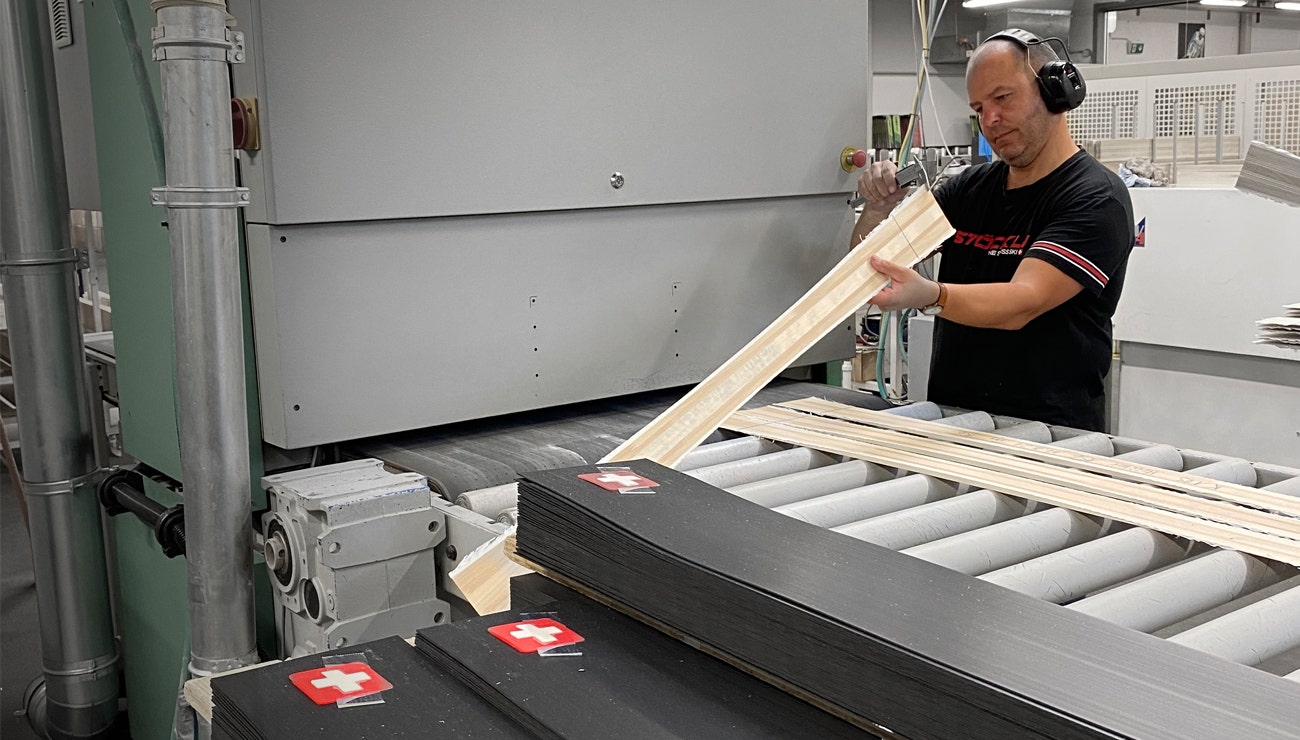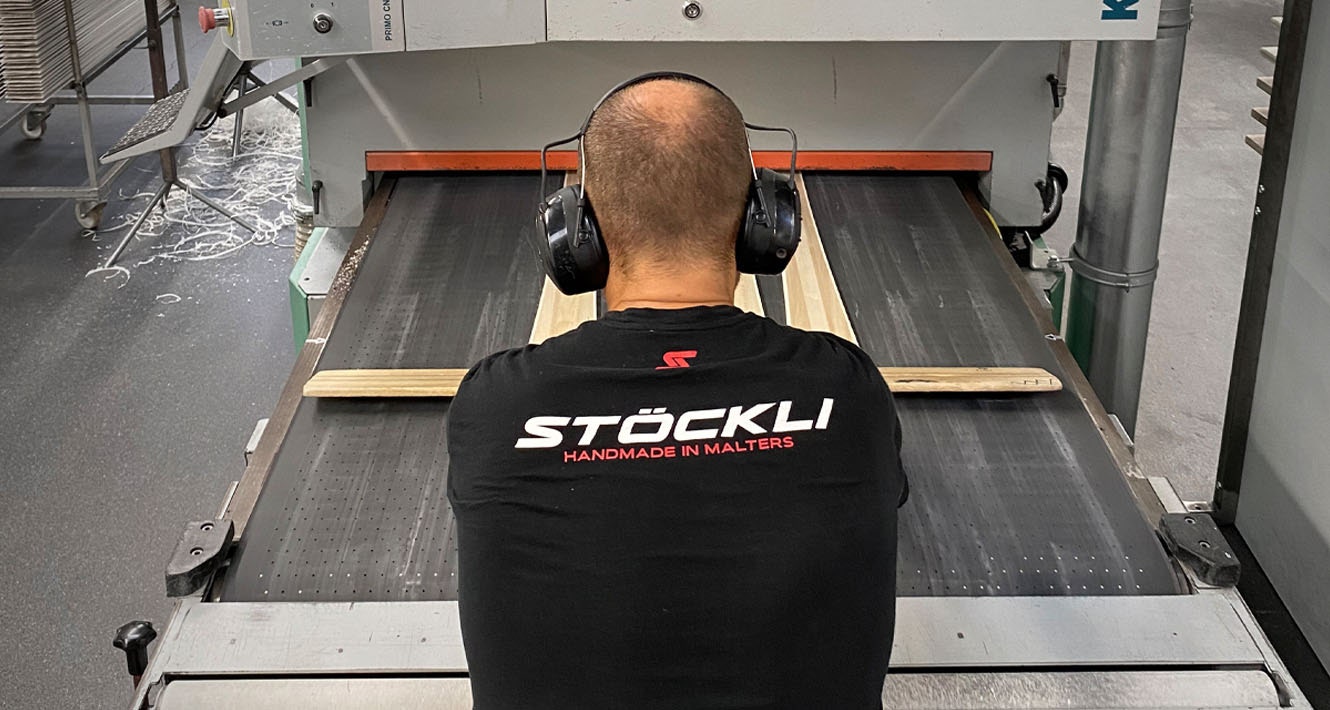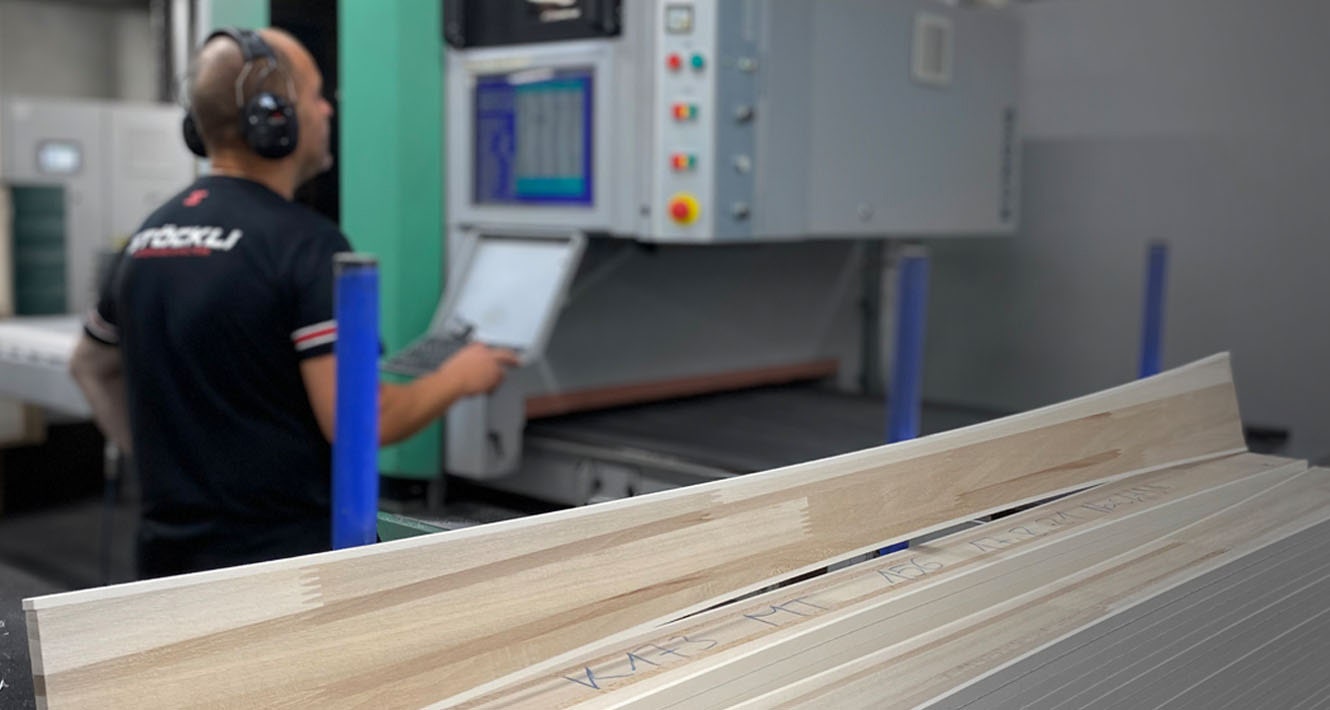2021-10-12
A craftsman to the core
There’s a little sawdust on the floor, and an unmistakable aroma of woodworking in the air. It’s really loud, the sound coming from machinery running at full capacity. A man, highly concentrated, stands at a machine and prepares laminates for processing: Thomas Lötscher, 47 years of age, lead machinist and specialist for wood cores.

“The laminates you see here are composed of three different wood types. Paulownia, poplar and beech, to be exact,” explains Thomas, pointing to a stack next to the machine. Looking more closely, you can see the three different varieties. The laminates made of these wood types are used in a number of different ski models. At the moment, Thomas is finishing the cores for the Laser AR. “When we place an order with the supplier, we specify the exact combination and proportion of the wood types in each laminate.” The laminates are delivered exactly as specified in a variety of lengths as required. A large proportion of the laminates are sourced in Switzerland, the remainder come from a supplier in Slovenia.
Cutting, milling, sanding and grinding, and bonding: a number of steps must take place here at the Stöckli ski factory in Malters before a finished ski is produced. The first step is the milling of the waist of the ski. This is the stage at which each model is given its typical sidecut, which determines the radius of the ski. Next, the sidewalls are bonded on. “The sidewalls help with power transfer and protect the core from impact and effects of the weather.” Once they have been dried overnight, the laminates are sanded and ground because the next steps in the process require that the surfaces be completely smooth. Then comes Thomas’ particular area of expertise, creating the right height profile. The core is the only layer of a ski which undergoes manufacturing processes that affect its height. A ski is obviously thinner at the tip and tail than it is in the middle. “This height profile is determined by the wood core. Together with the types of wood used, the height profile of the core determines the stiffness and the flex point of a ski.” The machine has a different program for each model and length of ski -- almost a hundred different programs that Thomas has to manage.
“Furniture is at the heart of a home, and a wood core is the heart of a ski”
The wood core is the heart of a ski. It determines the basic character and the main handling characteristics. As mentioned above, this can be influenced by the choice of different wood types. When it comes to wood, there are three main factors to consider: hardness, elasticity and weight. “For instance, beech is really hard and gives the ski the necessary tension and stability,” explains Thomas. Beech is used in almost every ski, but beech wood alone would make for an almost unskiable ski. “For this reason, we build in more elastic wood types such as poplar and ash, or in the case of racing skis, high quality okoume.” A further key criterion is weight, especially for free riding and touring. This is where paulownia comes in. “It’s one of the lightest wood types there is, but it has good stability and is easy to machine,” adds Thomas.
In case it wasn’t apparent earlier, we are clearly dealing with a wood specialist. Indeed, as a trained cabinet maker, Thomas knows wood inside and out. From a start making furniture he graduated at some point to making skis – a good decision for both parties, as it soon became apparent. And perhaps the two products aren’t as different as it might seem at first glance. “Furniture is at the heart of a home, and a wood core is the heart of a ski”, says Thomas with a grin. Perhaps this comparison is a little far-fetched, but the connection between the two worlds seems to work and work well: Thomas has been with Stöckli now for 26 years.
A lot has happened in those 26 years. In the early days, laminates were generally finished by hand. Planes, milling machines and grinders were used to give them their shape. “That was a lot more labor intensive and took a lot longer than it does now.” Nowadays the work is handled by a modern machine. It can finish four laminates at the same time with a high degree of precision. “We talk in terms of a maximum variance of four to five hundredths, which for wood finishing is really exact.” In a single day, Thomas can complete around 250 cores. If he is making racing ski cores, the number will be slightly lower -- they are more complex and are composed mostly of two parts that have to be joined.
In general, it is the racing skis and the pride of helping to manufacture such an exclusive product that makes the job so attractive to him. “When you experience the success of our athletes on the skis we have made, it’s an indescribable feeling.” For Thomas, this is a source of enormous satisfaction, the confirmation of the fruits of his efforts. Of course, every winter he also enjoys experiencing the results of his hard work firsthand -- ideally with a Laser SL in the 160 cm length. “This ski suits me to a T – we’re the perfect duo.” The same thing could also be said about Thomas and Stöckli.

